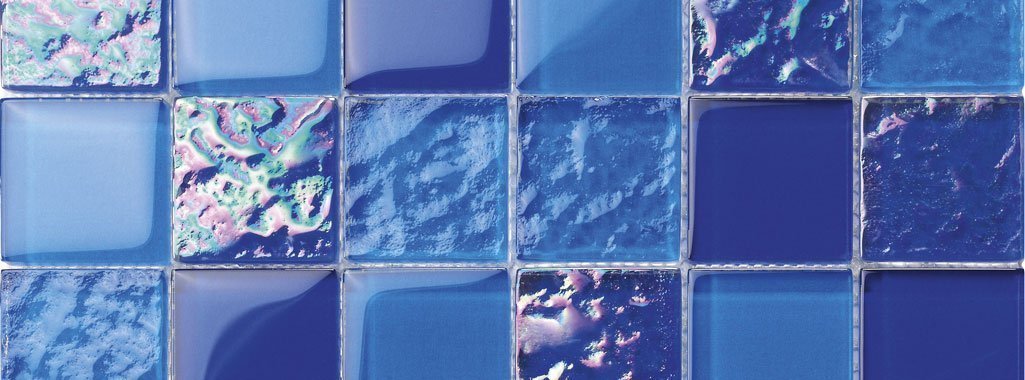Description
FRESH COLLECTION
In mosaics for swimming pools we have a wide range of colors that make it possible to mix tonalities, giving any project a creative and unique aspect.
The color of the water will depend on several factors, the color of the material used, the depth of the pool and the amount of light that falls on it. Although as a general rule it will tend to bluish colors, and this is due to a physical phenomenon called Rayleigh scattering. This effect increases with the amount of water. In deep pools we see a darker blue color. On the contrary, when the amount of water does not exceed 2 ft we do not perceive this effect and we see the transparent water.In addition to the depth, the light and the environment directly affect the final tone of the water. If the pool is in a space that receives a lot of sunlight, the color will be lighter and if there is hardly any light, the water will appear darker. We must take into account if the pool is inside or outside to see the amount of light it receives and know the elements that surround it, as they will have a direct relationship with the final tone. For example, in pools surrounded by vegetation we will see the water with a greenish tone.
Therefore, Rayleigh Dispersion, depth, light and environment will be key in the color of the water, but the color chosen in the mosaic will be very important to qualify the different shades of water blue, achieving surprising versions. Remember that the appearance of the water will change depending on the state of the sky, the time of day, the amount of light, the season or the depth of the pool.
SPANISH
FRESH Mosaicos.
En mosaicos para piscinas contamos con una extensa gama de colores que posibilitan mezclar tonalidades, entregando a cualquier proyecto un aspecto creativo y único.
El color del agua dependerá de varios factores, el color del material utilizado, la profundidad de la piscina y la cantidad de luz que incide en ella. Aunque como norma general tenderá a colores azulados, y esto se debe a un fenómeno físico llamado dispersión de Rayleigh. Este efecto aumenta con la cantidad de agua. En piscinas con mucha profundidad observamos un color azul más oscuro. Por el contrario, cuando la cantidad de agua no supera los 2 ft no percibimos este efecto y vemos el agua transparente.
Además de la profundidad, la luz y el entorno afectan directamente en el tono final del agua. Si la piscina se encuentra en un espacio que recibe mucha luz del sol, el color será más claro y si apenas recibe luz, el agua parecerá más oscura. Debemos tener en cuenta si la piscina es interior o exterior para ver la cantidad de luz que recibe y conocer los elementos que la rodean, ya que tendrán relación directa con el tono final. Por ejemplo, en piscinas rodeadas de vegetación veremos el agua con un tono verdoso.
Por tanto, la Dispersión de Rayleigh, la profundidad, la luz y el entorno serán clave en el color del agua, pero el color elegido en el mosaico será muy importante para matizar las diferentes tonalidades del azul del agua, consiguiendo versiones sorprendentes. Recuerda que la apariencia del agua cambiará dependiendo del estado del cielo, de la hora del día, la cantidad de luz, la estación del año o la profundidad de la piscina.







